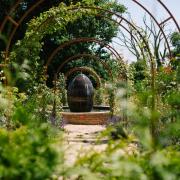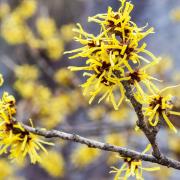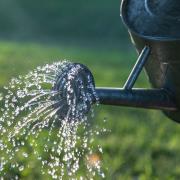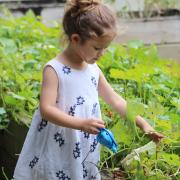After a fruitful summer the garden and greenhouse can still provide a wealth of vegetables, even in the depths of winter, with a little forward planning and careful storage
Regrettably, the surfeit of summer vegetables generously supplied by our gardens has almost come to an end. The more ambitious have probably frozen, bottled or dried some of the summer produce, but there are plenty of other ways that the garden can provide food for your kitchen through the winter.
Storage capacity
Durable vegetables such as bulbing onions and potatoes can be stored for months in a garage or shed. Just follow a few simple rules, onions must be dried down before going into store, and potatoes kept in the dark so they don’t turn green and bitter.
Winter squashes are gardening newcomers and like potatoes and onions, they can be stored over winter, though they need special handling if they are to last. Successful storage begins with the harvest, which must be delayed until the skin surrounding the fruit has hardened. At this point cut the fruit off the plant with a knife or secateurs, leaving at least 2.5 cm of stalk. Once they are harvested, the fruit have to be ‘cured’ to further toughen their skin and improve storage life. Curing is simply a matter of keeping the fruit in a warm environment for 10 to 14 days – either outdoors if there is a sunny spell and the fruit are protected from rain, or in a tunnel or greenhouse, where it is both drier and warmer. After curing, keep in a cool, frost-free spot where the temperature can be maintained between 10 to 15ºC.
Stand and deliver
The naturally cold temperatures of the outdoors refrigerate hardier crops for free, so plants such as leeks can be conveniently harvested when they are needed. ‘Tundra’ cabbage, a particularly hale variety, will keep in the garden until mid-spring. A cross between white and Savoy types of cabbage, Tundra produces firm heads that can be used in salads, stews or stir fries.
Main crop carrots such ‘Nairobi’ and the ‘Autumn King’ types are also compliant enough to withstand in situ storage. Unlike Tundra, however, they may need some protection from the frost, so insulate the roots by covering them with straw – preferably from an organic farmer. Even then, overwintering works best on well-drained soil where water logging isn’t an issue. Mice and slugs can cause problems, so periodic checks under the straw will reveal their unwanted presence.
Kale – extremely resistant to freezing temperatures – is highly adapted to outdoor storage. The green curly type has been joined by the likes of ‘Redbor’ (red curly leaves), ‘Black Tuscany’ (elongated, blistered leaves that are almost black) and ‘Red Russia’ (tender, red-tinged leaves that are slightly curled). Not only can the leaves be picked throughout the winter, but tasty side shoots in the spring rival anything purple sprouting broccoli can offer.
Winter Leaves
With its mild climate, Dorset is ideally suited for sowing vegetables in the autumn and growing them through the winter in a greenhouse or tunnel. Though almost anything cold hardy is suited to this style of protected, off-season cropping, Oriental greens and mustards are a logical choice – they are productive, easy to grow and offer a stimulating choice of varieties (see table).
Sow seeds into modular trays under cover anytime during the second half of September. The seeds will quickly germinate and morph into seedlings ready for transplanting in three or four weeks. These can then be transferred either to the ground or a grow bag, leaving about 20 to 25cm between them each way.
Though harvesting can be done at any stage of the plant’s growth, a good time to start is when the leaves are at least 20cm tall. Harvesting, however, is not an exact science, and the ideal height will vary: for example, tatsoi tends to have a prostrate growth habit and the leaves do not grow upwards.
Harvest the larger, outer leaves, leaving the smaller ones in the centre. These will continue growing, and when they are tall enough, the harvesting process can be repeated. This cycle of cut-and-grow-again will continue until about March, when the plants will start to bolt.
--------------------------------------------------
Read on
• Top tips on getting the best flavour from your vegetable plot• Top tips on growing your own legumes



























